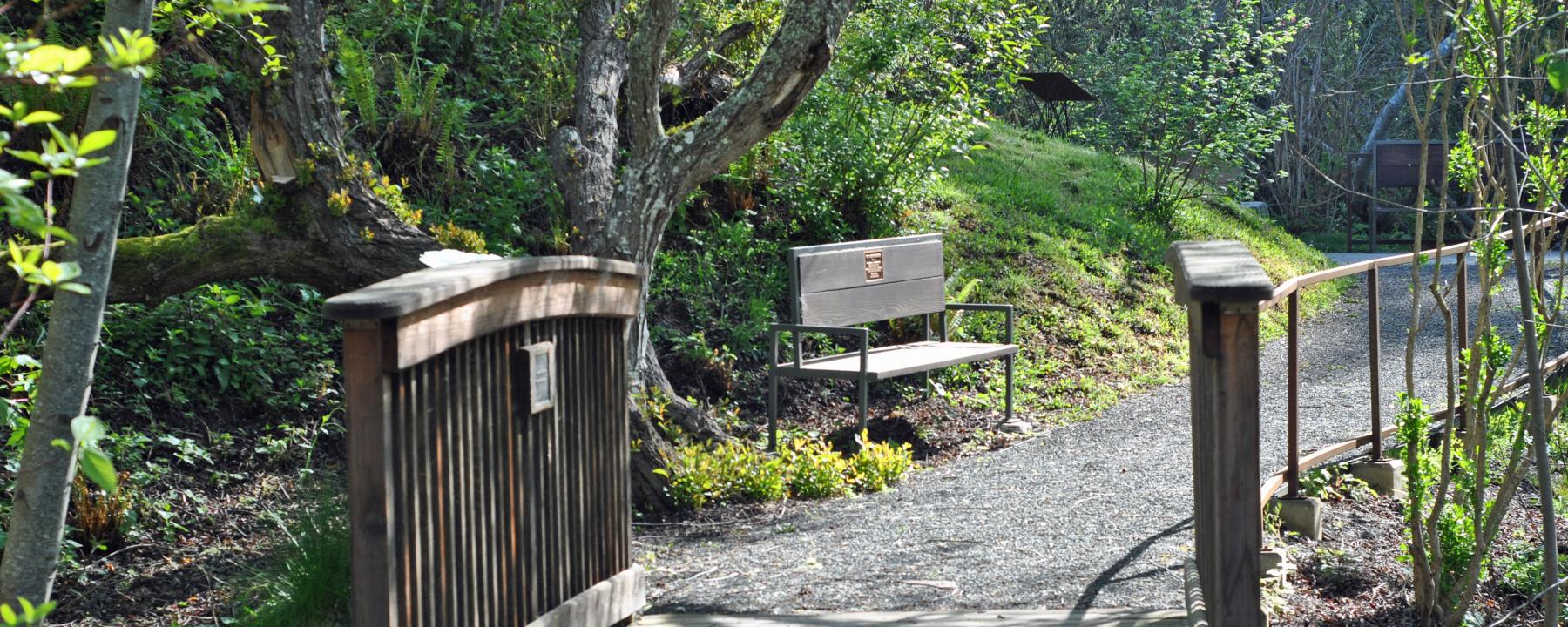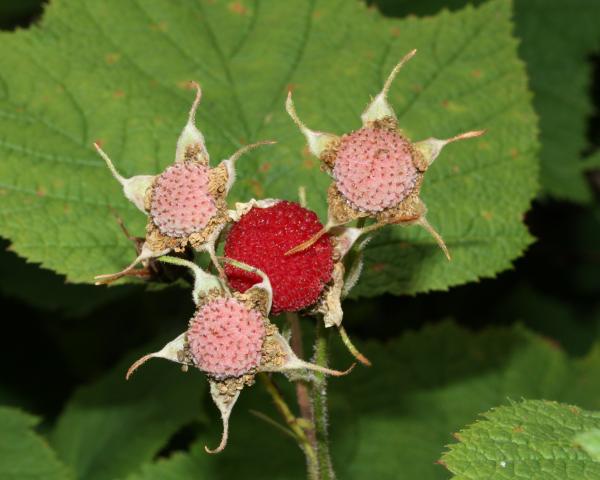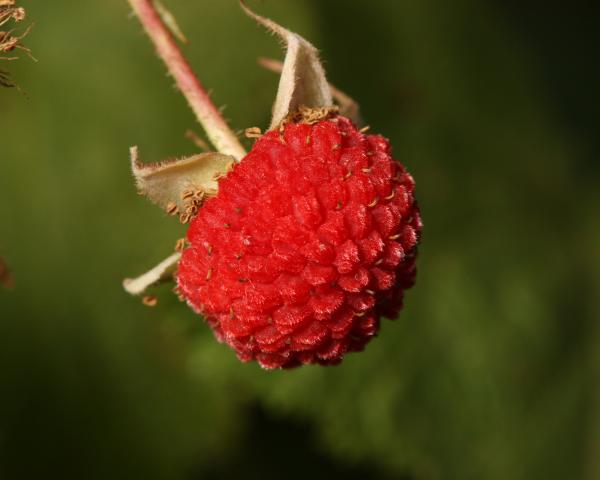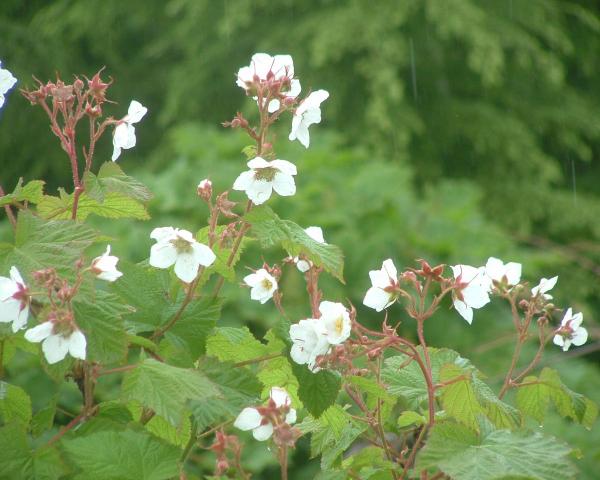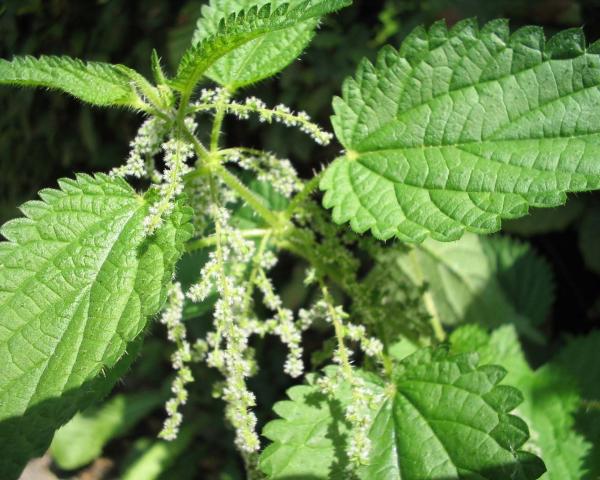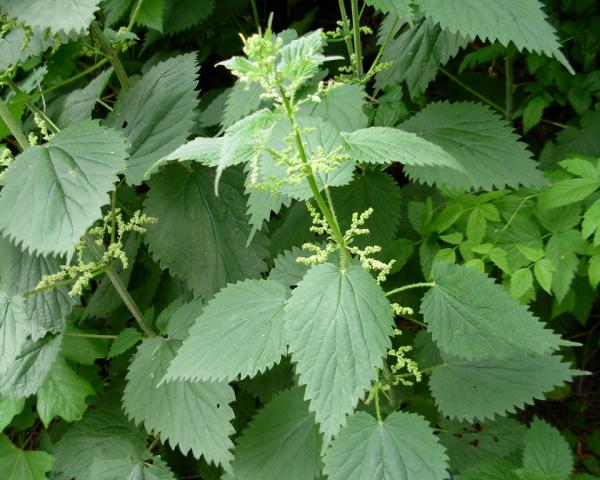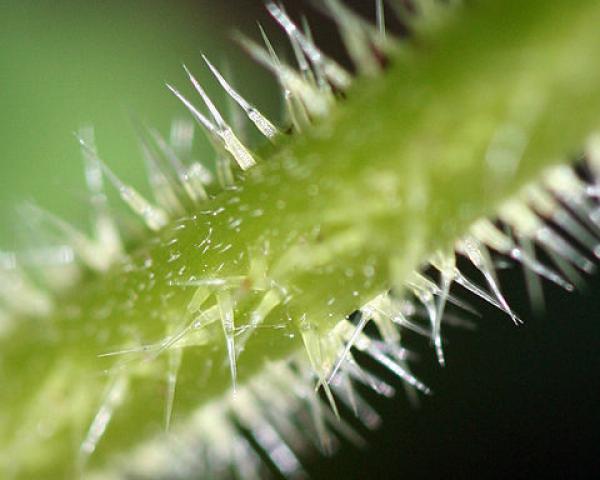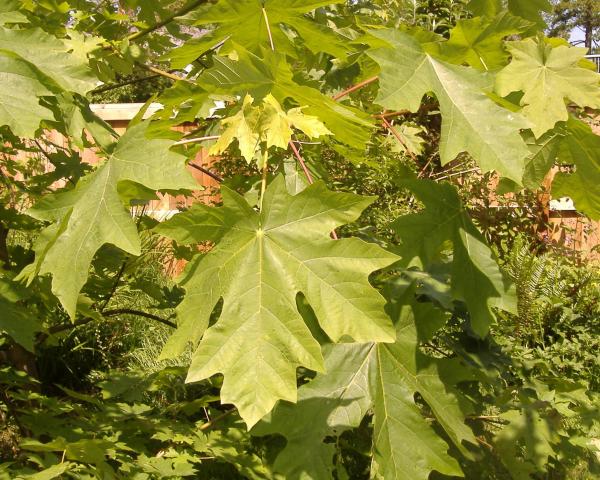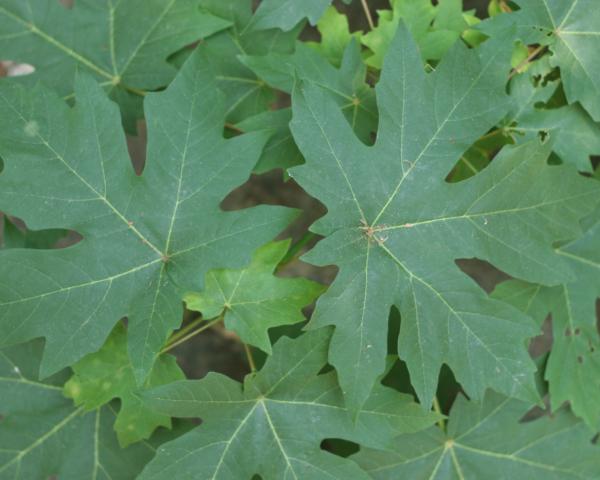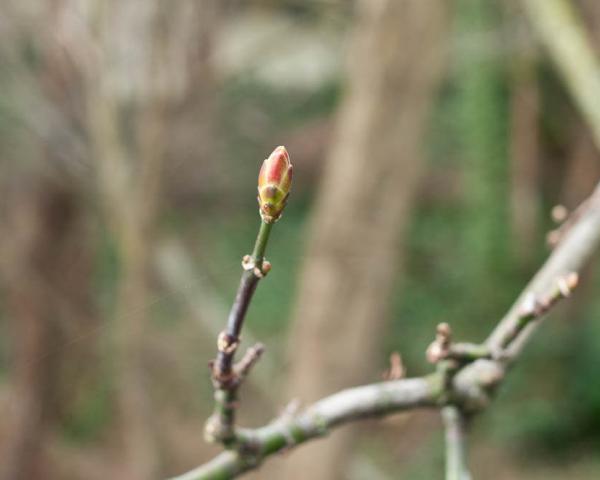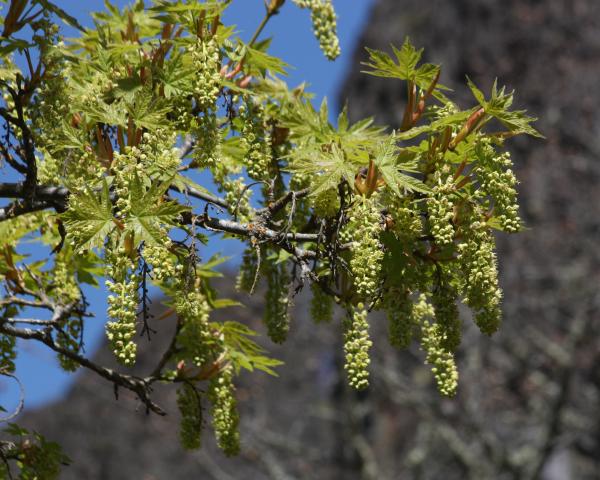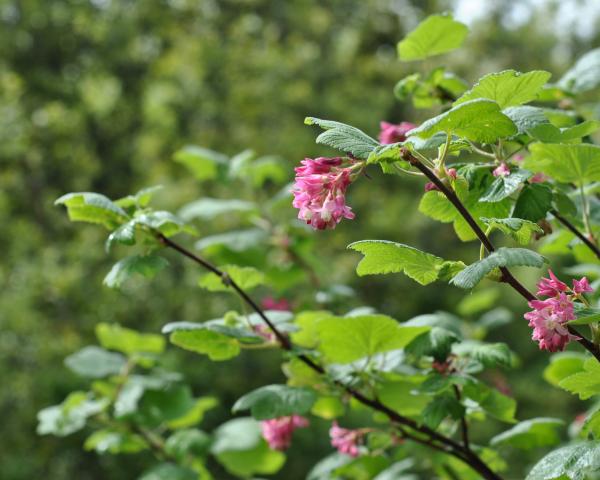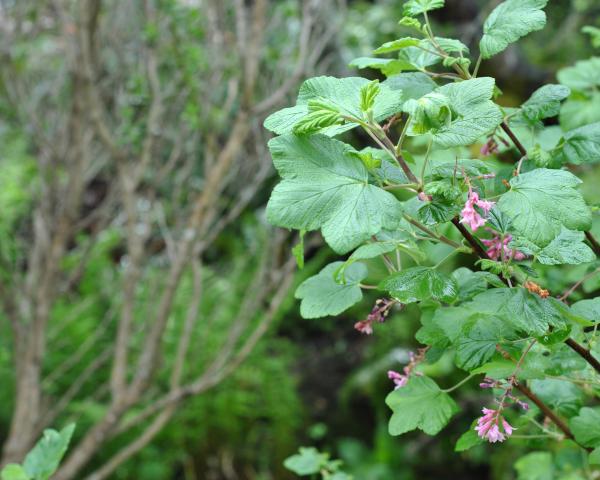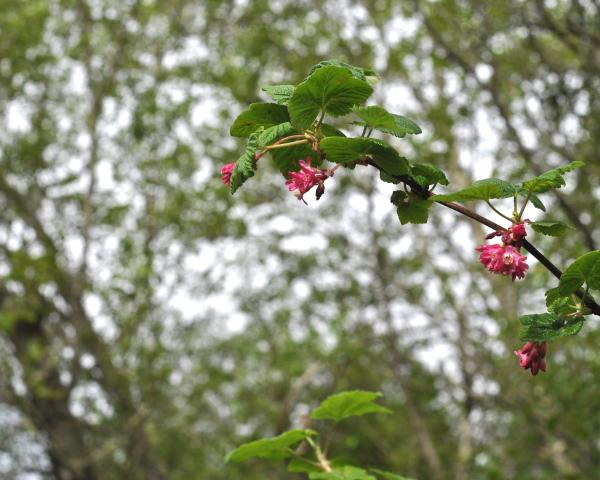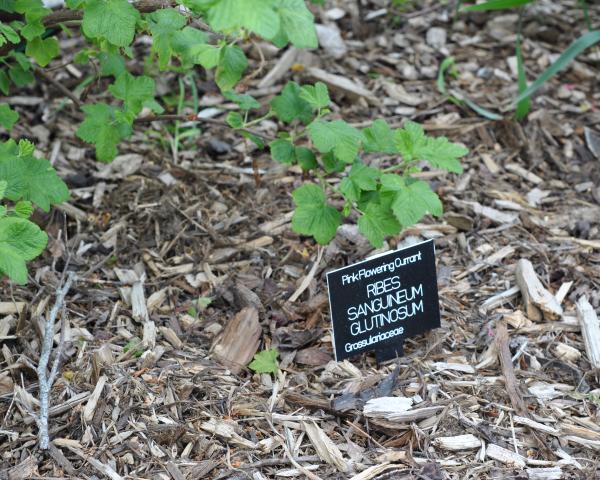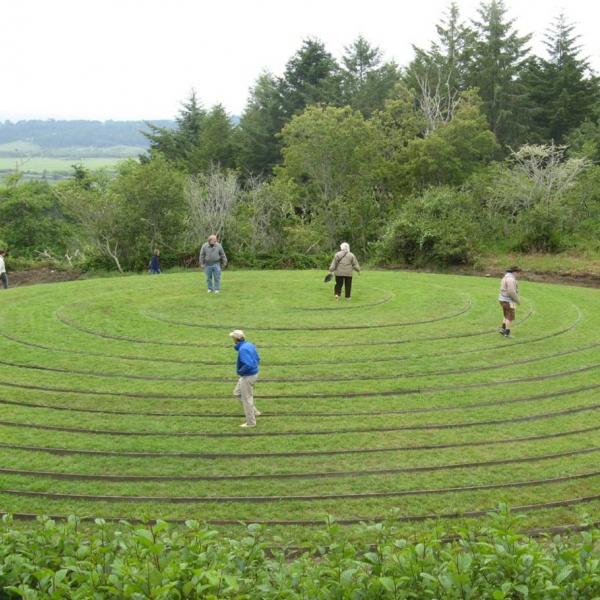Wildberries Natural Riparian Area
About the Garden
A riparian area is the interface between land and a river or stream. The Wildberries Natural Riparian Area is home to the perennial Fault Creek and a rich community of native willows, berries, flowering currant, red alders and other natives. Restoration of this natural riparian area was largely funded by a grant from the California Coastal Conservancy and a donation from Wildberries Marketplace. The restoration replaced invasive and other non-native species with grasses, shrubs and trees that are native to this area and that can withstand seasonal flooding. These plantings help to shade the stream and act as filters of pollutants from surface runoff, enhancing water quality via biofiltration.
One of the advantages of a natural riparian area in a botanical garden is to inspire visitors to recognize the benefits of using native and riparian plantings in their gardens as a food source for both humans and wildlife, as a tool to manage stormwater in the landscape and in ornamental landscapes. Wildberries Natural Riparian Area is a pleasing habitat and a great place for bird watching and learning about gardening to attract wildlife. It also provides a pleasant location for a quiet picnic via a handicap accessible path.
Features
- 5228
rubus_parviflorus_9481.jpg
https://www.hbgf.org/sites/hbgf.org/files/rubus_parviflorus_9481.jpgrubus_parviflorus_3734.jpg
https://www.hbgf.org/sites/hbgf.org/files/rubus_parviflorus_3734.jpgrubus_parviflorus_537906988.jpg
https://www.hbgf.org/sites/hbgf.org/files/rubus_parviflorus_537906988.jpg
Thimbleberry - Rubus parviflorus
Thimbleberry is native to western North America and grows typically along roadsides, railroad tracks and in forest clearings. Like many opportunistic plants, it commonly appears as an early part of the ecological succession in clear-cut areas. It spreads easily through underground rhizomes and can be very invasive in areas where it is not maintained. Wild thimbleberries can be eaten raw or dried and can be made into a jam. The flowers support pollinators and are a special value for native bees and the fruit is attractive to birds. It is the larval host and a nectar source for the yellow- banded sphinx butterfly.
Habitat: Forests, riparian areas
- 5229
urtica_dioica_bluten.jpg
https://www.hbgf.org/sites/hbgf.org/files/urtica_dioica_bluten.jpg2544110170_c82d264f7d_b.jpg
https://www.hbgf.org/sites/hbgf.org/files/2544110170_c82d264f7d_b.jpg480px-urtica_dioica_2848.jpg
https://www.hbgf.org/sites/hbgf.org/files/480px-urtica_dioica_2848.jpg
Stinging Nettle - Urtica dioica
Stinging nettle is an herbaceous perennial flowering plant native to Europe, Asia, Africa and western North America. It is a plant that causes severe irritation when touched. But it has also been used for centuries as a medicinal, believed to detoxify the body, improve metabolic efficiency and boost immunity.
Habitat: wetlands, fields, woods
- 5230
acer_macrophyllum_1199.jpg
https://www.hbgf.org/sites/hbgf.org/files/acer_macrophyllum_1199.jpgacer_macrophyllum_leaves_superfantastic_001.jpg
https://www.hbgf.org/sites/hbgf.org/files/acer_macrophyllum_leaves_superfantastic_001.jpg6954904301_74f20ccfc0_b.jpg
https://www.hbgf.org/sites/hbgf.org/files/6954904301_74f20ccfc0_b.jpgacer_macrophyllum_7996.jpg
https://www.hbgf.org/sites/hbgf.org/files/acer_macrophyllum_7996.jpg
Big Leaf Maple - Acer macrophyllum
Acer macrophyllum is a large deciduous tree native to western North America, mostly near the Pacific Coast. It has the largest leaves of any maple. In the fall the leaves turn to gold and yellow and offer a spectacular contrast to a backdrop of evergreen conifers. It also makes an effective statement in a residential landscape, provided there is enough space. In the Wildberries Natural Riparian Area, it has been used to form an allee along the main pathway.
Habitat: riparian communities, near streams and river floodplains
- 5239
174.jpg
https://www.hbgf.org/sites/hbgf.org/files/174.jpg172.jpg
https://www.hbgf.org/sites/hbgf.org/files/172.jpg173.jpg
https://www.hbgf.org/sites/hbgf.org/files/173.jpgdsc_0500.jpg
https://www.hbgf.org/sites/hbgf.org/files/dsc_0500_0.jpg
Pink Flowering Currant - Ribes Sanguineum Glutinosum

